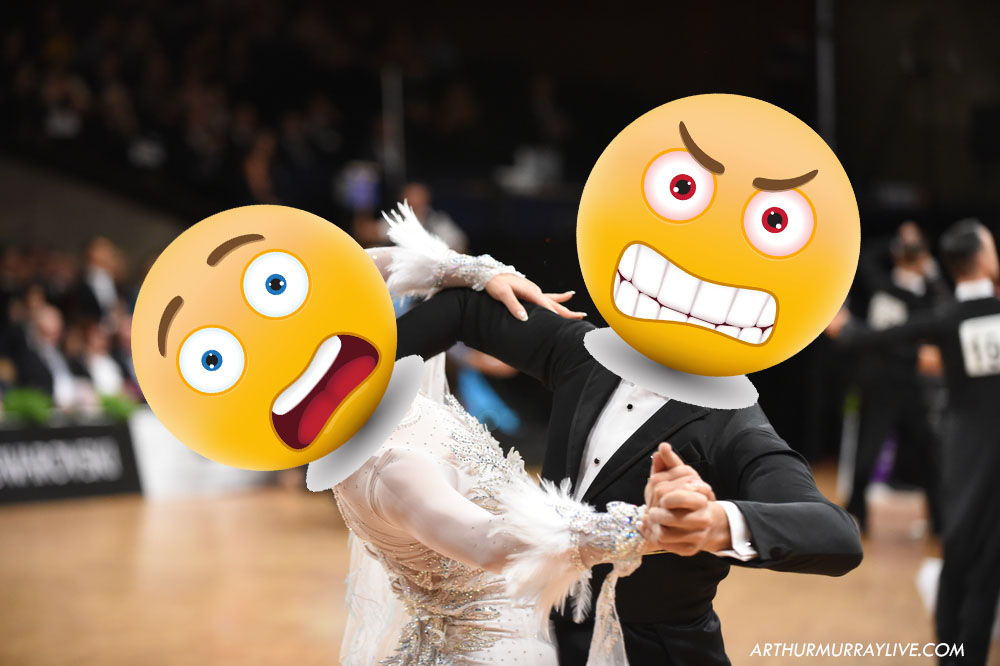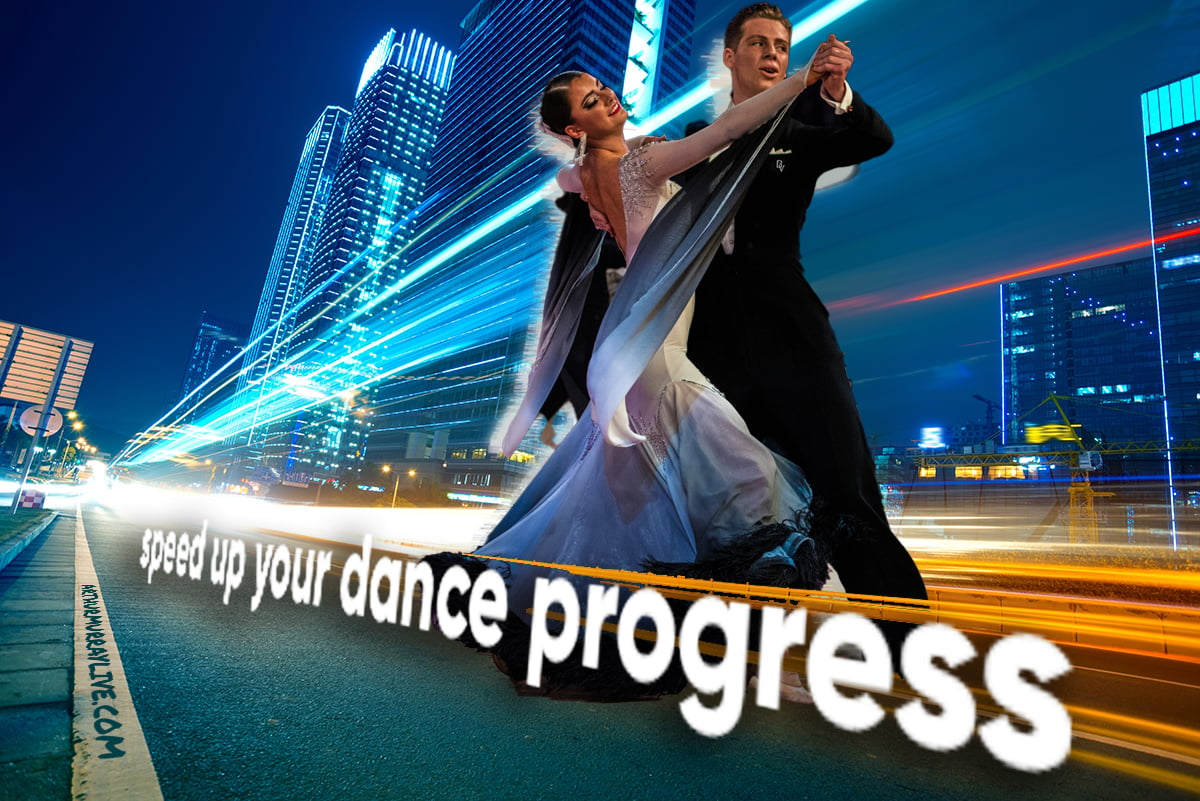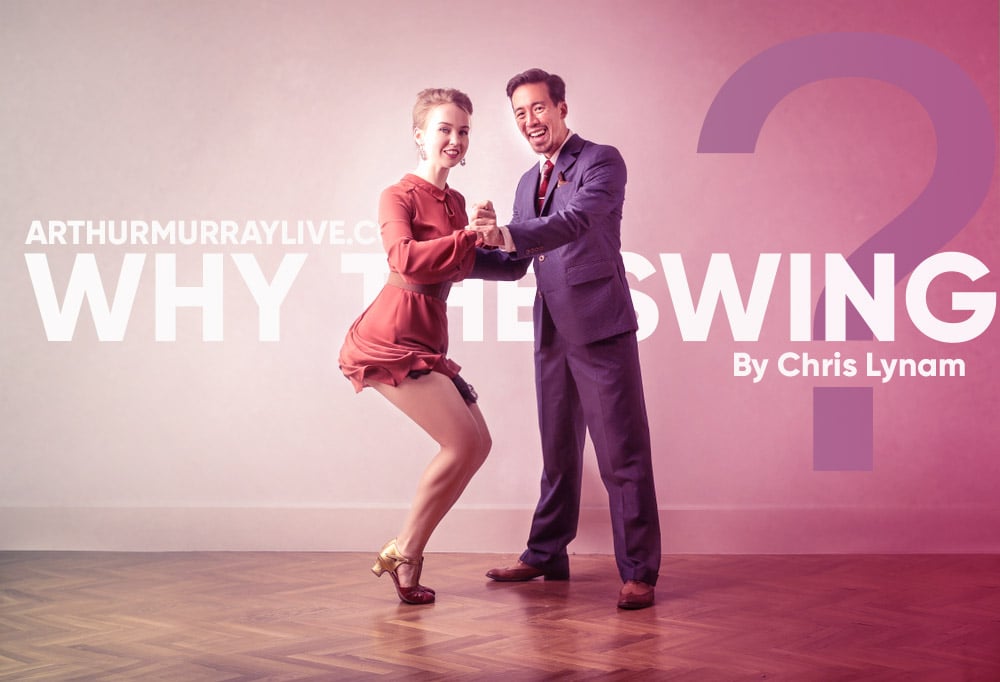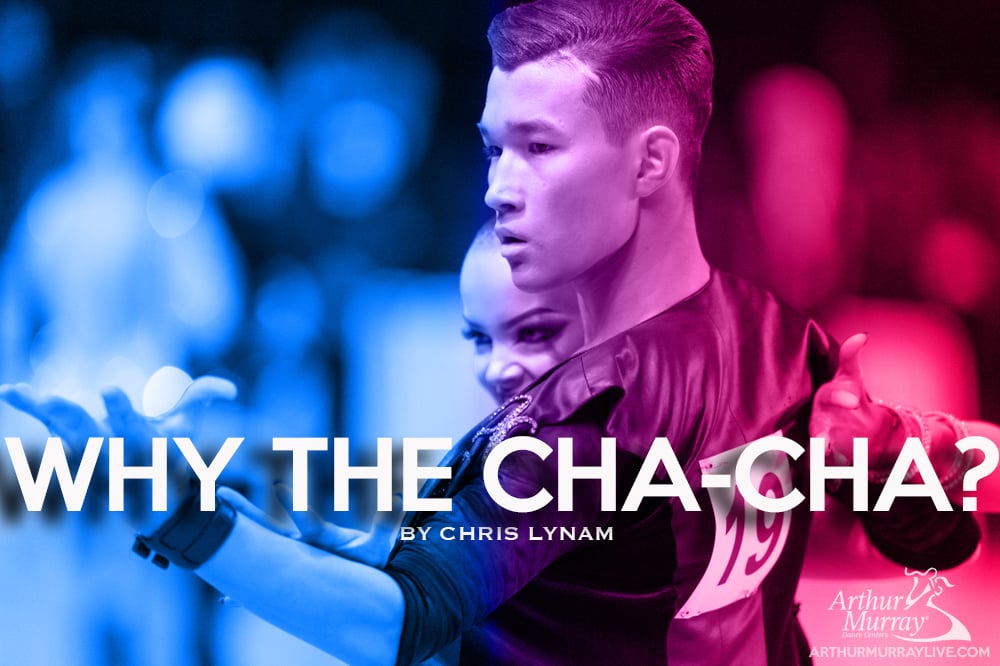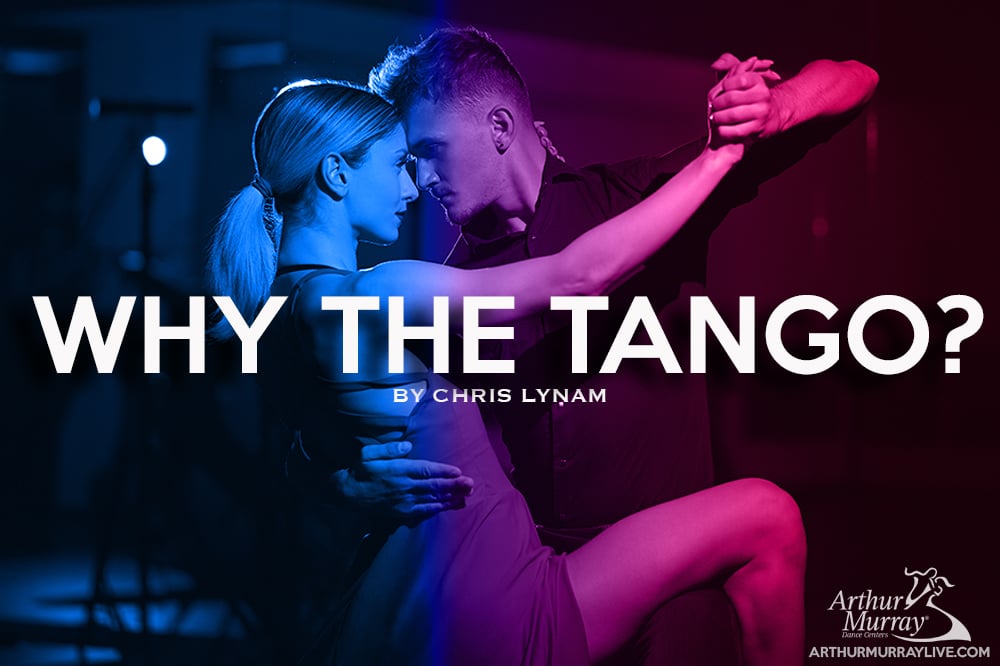When constantly moving outside of your comfort zone, you're bound to get hurt along the way.
But despite the bumps and bruises, aches and pains, Ballroom Dancing is a hobby worth the soreness, and all the comfort zone growing pains along the way.
As long as you can recover.
 10 Ballroom Dance Wounds and How to Avoid Them
10 Ballroom Dance Wounds and How to Avoid Them
1. Stepping on Your Own Foot
This is pain that is both physical and emotional. "How could I have done this to myself?!" doesn't make your throbbing foot feel any better.
- Pain Type: Combination
- Pain Level: Physical (+8), Emotional (+10)
- Recovery: A few deep breaths and optional water break, and just know that this has happened to the greatest ballroom and latin dancers at some point. So you're on your way.
2. Unfair Comparisons
Dance comparisons are hazardous to your dance health. Every dancer should make goals that are centered around becoming the best version of themselves, not an imitation of someone else.
- Pain Type: Emotional
- Pain Level: Emotional (+6-10)
- Recovery: We wrote an article about the dangers of Dance Comparisons. It's always important to communicate with your teacher about what you're noticing. Rather than trying to do the dance version of a life-swap, your teacher will probably recommend watching certain dancers to pinpoint specific qualities you can set goals to achieve.
3. Process Shrinking
Goals are sexy, the work is not. Achieving your dance goals will involve a process, and minimizing it doesn't make the process go any quicker.
- Pain Type: Frustration
- Pain Level: Frustration (+6)
- Recovery: Setting goals is one thing, but Process Shrinking occurs when we fail to set parameters as well. Remember the goal, but lock in on the process to create your change and this won't happen again for at least a couple of weeks... or hopefully longer than that.
4. Floor Burn
Knee slides are a great way to put the old "blood, sweat, and tears" into your next Mambo routine. Avoid floor burn by wearing a low profile knee pad during practice so you can keep the blood and tears at bay and focus on the sweat instead.
- Pain Type: Physical
- Pain Level: Physical (+8)
- Recovery: At some point, you may be asked by your teacher, or coach, to put your knee on the dance floor.... on purpose. Use the tip above to ensure that all of your knee stays with you.
5. Partner Picking
As rewarding as it may seem to blame things on your partner, in the long run, it won't fill the void in your dancing... and may dampen the can-do spirit in your partnership.
- Pain Type: Frustration
- Pain Level: Frustration (+6)
- Recovery: If you haven't heard, Leading and Following is pretty important to your hobby. You may have also found that pointing out all of your partner's deficiencies doesn't fix the problem, or make you feel any better. Instead, ask yourself "what can I do on my side of the dance frame to make this better?", and you'll have better results... and practices.
6. Sharing Your Dance Success with the Wrong People
"Why can't you spin more?" "You sure look slow out there." "Can't you do the splits?" These little zingers are just a small sample of what could happen if you show your non-dancing friends your dance videos. Now, there are those that will be incredibly supportive, but anyone who rolls their eyes when you mention ballroom dancing may not be one of them.
- Pain Type: Emotional
- Pain Level: Emotional (+3-9)
- Recovery: Unfortunately, there are going to be critical people in your life - even if they are lacking dance skills. Your dancing won't change that, but maybe getting them dancing will. In the meantime, share your dance accomplishments with anyone who was excited to hear about your first dance lesson, including other students and your teacher, and there will be no shortage of validation or support.
7. Unsupervised Knee Action
Sometimes more is not necessarily better. Yes, moving your knees a specific way will create hip motion, but doing that 10,000 times by yourself in an unsupervised environment makes you more likely to become injured, and less likely to look like Shakira.
- Pain Type: Physical
- Pain Level: Physical (+10)
- Recommendation: Discontinue unsupervised hip motion practice immediately, add ice, inform your teacher, and check with your doctor if pain persists after an hour. Your heart was in the right place, but your knee wasn't.
8. Achievement Deflections
Believe it or not, there are times when you are actually making progress - even if you don't think so. Deflecting praise from your teachers or fellow students can keep you from climbing out of the pit of negativity.
- Pain Type: Frustration
- Pain Level: Frustration (+2-9)
- Recovery: There is a skill to receiving a compliment appropriately. It isn't something that just comes naturally. Keep in mind that while in the Conscious Use Stage, in the Curve of Learning, you'll typically be the last one to realize that the skill or step you are executing looks good.
9. Award-itis
You can work as hard as you have worked, to dance as great as you have danced, but that won't always win you an award.
- Pain Type: Emotional
- Pain Level: Emotional (+4-10)
- Recovery: You should reward yourself for a job well done. Whether that's with a pint of your favorite ice cream, buying a new pair of dance shoes, or going to the next District Showcase - your personal milestones are important, and Awards should never overshadow the personal Rewards of improving your dance skill.
10. Foot Pain
Guitar players develop calluses on their fingers after long periods of practice, and dancers develop calluses, bruises, aches, and pains as their dancing feet are forged in the fires of their dance shoes. A wound, yes, but also a necessary evil.
- Pain Type: Physical
- Pain Level: Physical (+2-9)
- Recovery: There will be aches, and you will now know first hand, or first foot, of the magic which is Epsom Salt.
Final Thought
One of the greatest things about this list is that everyone, from the newest of the new, to the World Champions, have felt some, or all, of these things. Learning to dance isn't about finding the path of least resistance, waiting for a series of perfect events, leading to an optimal outcome. Just like life, ballroom dancing is successful only after stretching beyond what you thought was initially possible, even if it causes you to stumble, step on your foot, and get mad at your partner.
Because the best ones will get up, make adjustments, and enjoy the path to making it better.
![]()



